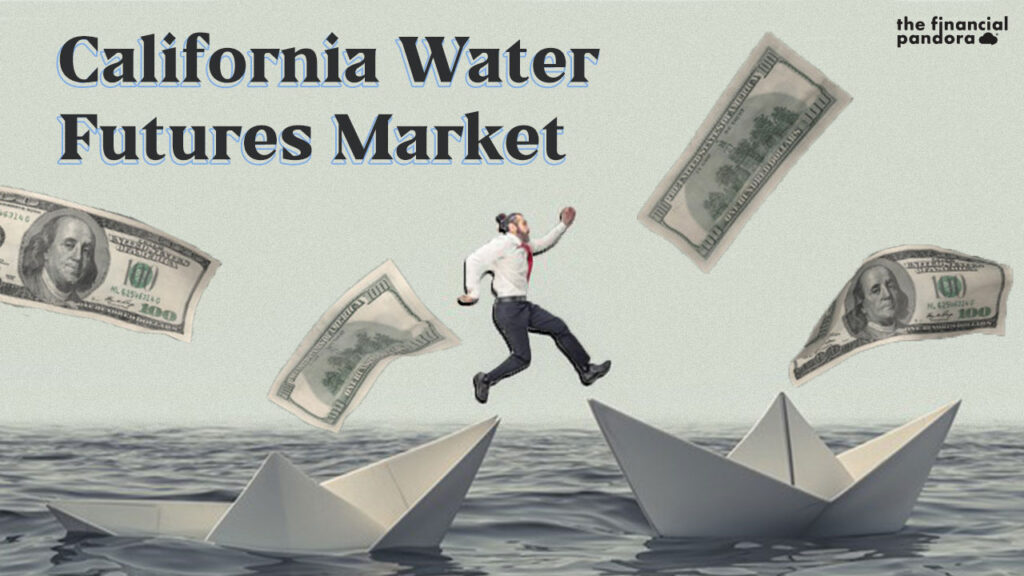California’s reputation as one of the premier innovation machines in the financial space can only be enhanced by a new futures contract that began publicly traded in the month of December. This contract allows investors to speculate on the prices of water in California essentially making water a commodity like gold and oil.
Water has been scarce in California for nearly a decade now, according to the U.S Drought Monitor the latest acute dry spell in the state of California ranged from nearly 2011 to 2020. This data just shows the acute shortage of water in the state. The Government has been trying to optimise their water management system by using interoperable structure of ducts, canals, pipes and reservoirs that transport water from places of plenty to places that need it. Despite the best efforts, thanks to Climate change, Overpopulation and lack of rainfall in the state, water has truly become a “scared” commodity in California.
This shortage of water has made pricing of water an important factor on which a lot of different sectors will depend on. Based on this argument, a water futures market seems reasonable and a need but the contract does have its shares of scepticism.
So how will the contracts’ function? Who will actually be participants in these contracts? and what does the future hold for these markets. We try to decode the newest member of the financial markets- “Water Futures”.
What is the California Water Futures Market?
The basic principle of this market would be the same as that of a Futures market. In this specific market, essentially a seller agrees to sell a certain quantity of an asset at a certain price and a certain time in the future, and a buyer agrees to buy that quantity of asset at that price and at that time. Put simply, a futures contract is a negotiated agreement now for a transaction in the future. This is basically done to save yourself from the constant price changes.
Water futures market would be the same as it will provide those seeking to buy water a way to reduce risks associated with scarcity, and those looking to sell water with a way to reduce risks associated with surplus. A very important difference between this futures market and others would be that, this contract will be settled by cash and not water because obviously how will you store the amount of water that can submerge an acre of land one foot high.
The prices of these contracts an anytime would be negotiated and settled on the basis of the Nasdaq Veles California Water Index (NQH2O). The NQH20 index tracks the price of water rights leases and sales transactions across the five largest and most actively traded regions in California. Water entitlement transactions from the surface water market and four adjudicated groundwater basins ‒the Central Basin, the Chino Basin, the Main San Gabriel Basin, and the Mojave Basin Alto Subarea are included in the index. The value of the index will reflect the volume-weighted average price of water, at the source, excluding conveyance costs and water losses in the underlying markets after adjusting for idiosyncratic pricing factors specific to each of the eligible markets and transaction types.
Each contract in this market is for 10 acre-feet of water, and the contract period can be for maximum of two years. The contract price can be any price agreed upon by the buyer and seller but is typically close to the index price. The contracts will settle on the third Wednesday of the month, and typically terms end on the quarterly months – March, June, September, and December. Regardless of the contract length, a contract can be traded multiple times throughout its term.
Who will Participate in these Markets?
They will be mainly two types of participants in this market-
Hedgers:
These people will actually These people actually use water for their day-to-day business. Hedgers in this market will include municipalities, water districts, and businesses like farmers or manufacturers. Hedgers will use this to reduce the risk factor of the business.
For example, consider Mark, a farmer in California. Mark forecasts the water delivery forecast for a year and anticipates that there would be shortage in the delivery. To hedge the risk, Mark decides to enter the market and buy five water futures contracts, for a total of 50 acre-feet of water, at a contract price of $600 per acre-foot. This contract will be settled in June.
According to the NQH2O index, the price has risen to $800. That means that Mark will get paid the difference between the contract price ($600) and the current price ($800) of water. That would be a difference of $200 per acre-foot, for 50 acre-feet, for a total of $10,000. Mark then uses this money to purchase physical water through one of California’s water markets.
While in this case prices increased, there can be a price decrease in which Mark would suffer huge losses. That is the risk associated in hedging your risk in this market. The price decrease also signifies that the initial prediction of Mark was wrong, that means there was no shortage of water. This makes Mark’s water risk low, and despite the cost borne participating in the futures market Mark still benefited from peace of mind and planning stability over the course of the contract term.
Speculators:
Speculators could be anyone – they are individuals or companies looking to make money on the market by betting on the future price of water. They are not interested in purchasing physical water and may be located anywhere in the world. Wealth management firms, hedge funds, or other financial companies may include California water futures as part of their asset portfolio, if they consider it a smart investment.
The market will help farmers and other major users a way to limit the exposure to price increases. It also helps in addressing major problems such as water scarcity and clean water. Similarly, to the California Cap and Trade market which deals in futures contract relating to Carbon emissions, the market will take time to come into motion in some years but according to analyst the futures contract will bring about a positive change just like the Cap-and-Trade market did.
While on paper, the water futures will help farmers and help in the water problems. It still does not address important issues such as climate change, polluting practices such as fracking or wasteful industrial agriculture. Also, in a general sense, this market will not actually increase the supply of water in California nor will it facilitate the movement of water from one place to another. With more speculators entering the market, the need for adopting sustainable activities would be discouraged as this would become a mere money-making scheme as one that happened in the Australia’s water trading scheme, when officials inflated the price of water for their own gain.
This new financial scheme could bring about a major change in a problem that everyone is facing not just people in California. It could also bring about ease in a market which is critical to a lot of businesses in California but there is always the risk of the whole market becoming just another commodity market, with Wall street and investors controlling the prices to make gains which will adversely affect the ordinary people.
The market is still at nascent stage and this will be a very interesting space to look at. At the time of the post, the prices have been rising at a steady rate. What are your views on having a same market in India or somewhere else, do let us know in the comments!
Follow Us @




